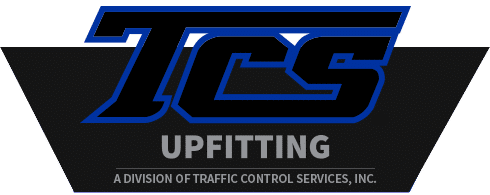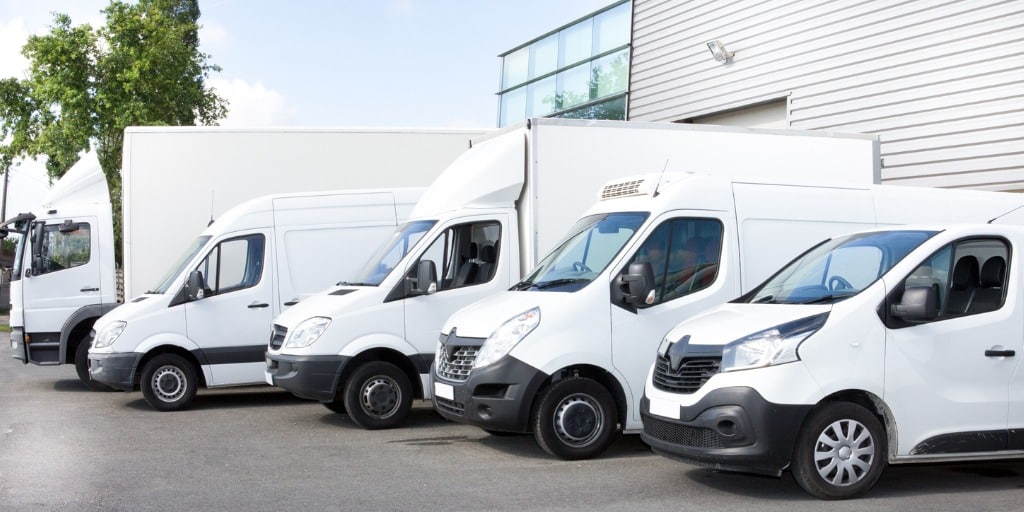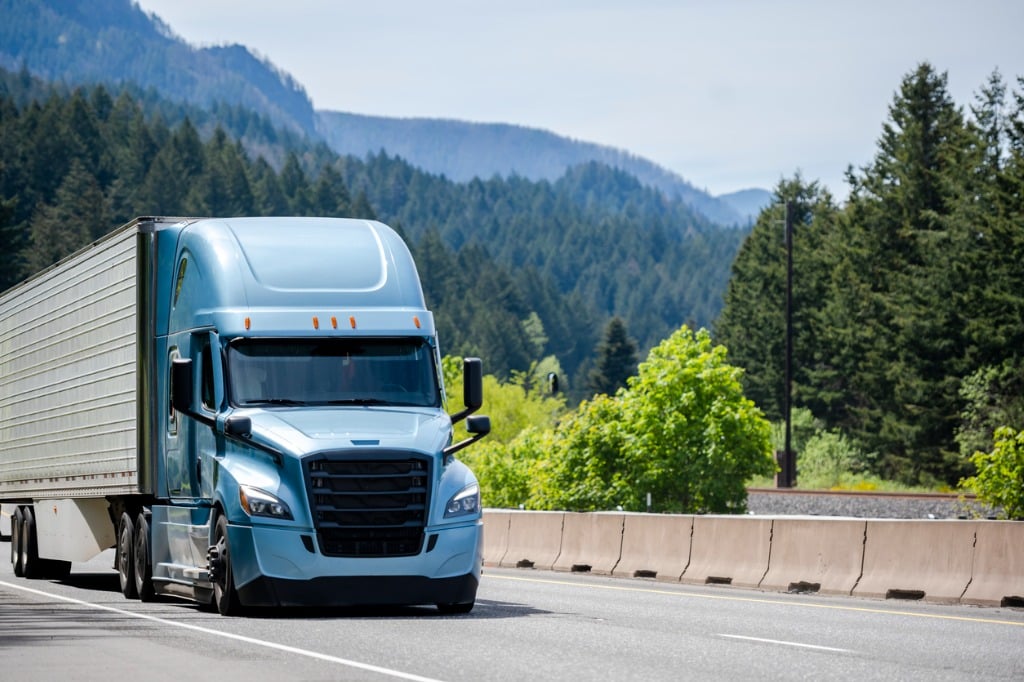Commercial vehicles are the backbone of every commercial business. Transporting everything from packages to heavy-duty items, organizations across all industries use commercial vehicles to transport goods of all kinds.
When you own a business, having the right commercial vehicles is critical to your company’s success. While many vehicles used for commercial use can be classified as commercial vehicles, the Federal Motor Carrier Safety Administration (FMCSA) has a more specific definition.
This article will discuss what a commercial vehicle is, the various types of commercial vehicles, and how the FMCSA classifies every kind of commercial vehicle. Continue reading below to learn more about how TCS Upfitting can provide you with high-quality commercial vehicle upfit services.
What Is a Commercial Vehicle?
A commercial motor vehicle (CMV) is a vehicle that is titled or registered to a company to use for business or commercial purposes. Commercial vehicles are commonly used to transport goods or freight, but they can also transport passengers or other heavy-duty cargo such as cars, trucks, tractors, and more.
The Federal Motor Carrier Safety Administration, which oversees and regulates commercial vehicles, defines commercial motor vehicles as “self-propelled or towed motor vehicles used on a highway in interstate commerce to transport passengers or property when the vehicle.
The FMCSA also has specific guidelines to determine whether a vehicle can be registered as a commercial vehicle. These guidelines include the vehicle’s intended use to transport 9 to 15 or more passengers, including the driver, hazardous materials per the Hazardous Materials Transportation Act (HMTA), and a Gross Vehicle Weight Rating (GVWR) of 10,000 pounds or more.
What Is Gross Vehicle Weight Rating?
Gross Vehicle Weight Rating is a safety standard used to prevent trucks from cargo overload. Essentially, it is a vehicle’s maximum safe operating weight, which includes the net weight of the vehicle and passengers, drivers, fuel, and cargo.
The GVWR is calculated by taking the combined weight of the strongest weight-bearing components, such as the axles and the weaker components, and the vehicle’s body, frame, and tires. This calculation determines the vehicle’s class, which in turn defines the regulations it must follow.
If a vehicle has a Gross Vehicle Weight Rating of over 10,000 pounds and is used for business, including nonprofits, it is subject to federal and state safety regulations for the safe operation of commercial motor vehicles. Vehicles weighing more than this weight are required to stop at state weigh stations and inspection stations, and drivers must adhere to hours of service and medical examination regulations.
What Are The Different Types of Commercial Vehicles?
All commercial vehicles are classified into several categories based on their Gross Vehicle Weight Rating. Although many vehicles qualify as commercial vehicles when they are designated for business use, here are the most common types of commercial vehicles:
 Semi-Trucks
Semi-Trucks
Semi-trucks, also referred to as 18-wheelers, tractor-trailers, or big rigs, are made up of a tractor unit connected to a trailer or bed via a fifth-wheel connection. Semi-trucks are mainly responsible for transporting cargo between distribution and fulfillment centers.
Sleeper Trucks
A sleeper truck is similar to a day cab truck designed for towing commercial trailers. Sleeper trucks are intended to provide truck drivers with a dedicated place to rest while traveling long distances and offer a living space for drivers depending on the size of the sleeper truck.
Day Cab Trucks
Day cab trucks are among the most common commercial trucks on the road, and they are frequently paired with a commercial trailer to transport goods. The day cab’s purpose is to hook up and haul large loads for short trips to be completed within the same day.
Box Trucks
Box trucks resemble semi-trucks in appearance, but their tractor is directly attached to the trailer without using a fifth-wheel connector. Box trucks have a cargo area separate from the vehicle’s main cab and are frequently used by businesses for moving, local deliveries, and hauling large items such as furniture and appliances.
Flatbed Trucks
Flatbed trucks feature a sizable open-air bed and are ideal for transporting cargo that does not require protection from environmental elements. Because of their open-air space, flatbed trucks are best suited for oversized hauling.
Pickup Trucks
While most pickup trucks are not automatically classified as commercial vehicles, they may be used for commercial purposes depending on the type of business. Pickup trucks are able to transport goods with a trailer and business tools and equipment but require a commercial driver’s license (CDL) to be used for business purposes.
Tow Truck
A tow truck, also known as a wrecker, is a vehicle used to transport disabled, improperly parked, impounded, or otherwise indisposed motor vehicles. This may include recovering a vehicle damaged in an accident, restoring one to a drivable surface after an accident or inclement weather, or towing or transporting one via flatbed to a repair shop or other location.
Boom Truck
Boom trucks are commonly used to recover vehicles from a ditch, over an embankment, or anywhere the vehicle cannot be safely reached while backing up. Boom trucks use an adjustable boom and winch to rotate, effectively transforming the tow truck into a mobile crane, and can also be used for heavy vehicle accidents.
Wheel-Lift
Wheel-lift tow trucks use hook and chain technology to create a large metal yoke that can be placed under the front or rear wheels of a vehicle to cradle them, with a pneumatic or hydraulic hoist drawing the front or rear end of the vehicle clear of the ground so it can be towed.
Self-Loading
Self-loading tow trucks consist of a boom and wheel-lift truck integrated into a single unit. Most self-loading tow trucks have controls for the apparatus inside the tow truck’s cab, allowing for quick pickup without the inconvenience of exiting the truck to hook up the vehicle.
Lift Flatbed
Lift flatbed tow trucks use a wheel-lift frame to lift a vehicle vertically and load it on the bed. Lift flatbed trucks are often used to remove illegally parallel-parked vehicles.
Step Vans
Step vans are a type of commercial van that is taller than full-size vans to make it easier for drivers to access items without ever leaving the vehicle. Step vans are often used by parcel companies (i.e., the United States Postal Service), police and fire departments, and bakeries.
 Cargo Vans
Cargo Vans
Cargo vans, also known as sprinters, are one-piece vehicles with a cargo area attached to the driver’s cab. Some cargo vans also have roll-up rear doors and are commonly used for plumbing, electrical, and cable repair services.
Passenger Vans
Full-sized commercial passenger vans can seat 9 to 15 passengers and are primarily used to transport large groups of people as part of a customer service offering (i.e., hotels) or as the service itself (i.e., travel or tour operations).
Transit Buses
Transit buses are built to transport a large number of passengers. They are commonly used as part of a city’s transportation network or school bus systems.
Motorcoaches
A motorcoach is a luxurious bus designed for long-distance travel. Modern motorcoaches are high-floor buses with luggage compartments beneath the passenger compartment, commonly used for private charters.
Heavy Hauler
A heavy hauler is a large transporter used to move oversize loads that are too large to travel by road without an escort and a special permit. A heavy hauler is typically made up of a heavy tractor unit and a multi-axle lowboy flatbed trailer. Some features include independently steerable wheels or a dozen or more self-steering axles and scores of rubber tires to spread out a load.
Refuse Trucks
Refuse trucks, or garbage trucks, are specialized commercial vehicles used to transport trash efficiently and safely. These trucks have a one-of-a-kind loading system that allows for on-demand trash compacting, allowing for more garbage to be hauled at once, improving community waste removal efficiency.
Make The Right Choice For Your Commercial Business by Choosing TCS Upfitting
The right commercial vehicle can mean the difference between a profitable and struggling business. Before deciding on which commercial vehicle can benefit your business, be sure to take the time to list your company’s needs, review your budget, and research your options. You can always modify vehicles once you’ve found the right vehicle.
If you’re thinking about making updates to your commercial vehicles, come see us at TCS Upfitting.
At TCS Upfitting, we’re committed to providing our customers with superior commercial vehicle upfitting services. We recognize the importance of high-quality craftsmanship, and we stand behind our work by delivering upfit solutions that increase your company’s day-to-day operations and success. Our team of experts is backed by years of experience and certified training and will gladly assist you in finding the best vehicle upfits for your commercial needs.
If you would like to learn more about our commercial vehicle upfit services, contact TCS Upfitting today to speak with an expert about how we can help you choose the best upfit solutions for your commercial vehicles.



 Semi-Trucks
Semi-Trucks Cargo Vans
Cargo Vans